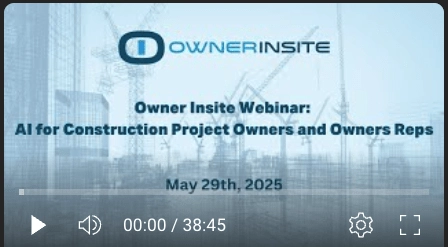Change orders are inevitable on most construction projects. Sometimes materials that were originally spec’d aren’t available and therefore replacement items have to be ordered instead. Often with a higher cost. Funny how that works.
Other times, errors undiscovered in the planning phase pop up and inevitably result in a change order. Again often at a cost that is less than favorable to the owner.
More often than not, a change order comes up because that’s the way some general contractors (GC) might make up for their low bid on a project. The change order becomes their chance to make up some profit at the expense of the overall project budget.
Some changes are simply unavoidable but in most cases, the owner of the project isn’t fully aware of the true impact to the project budget until they are left with no choice but to accept what is being proposed by the GC because they have no other options.
No matter what, change orders hurt. They cost time and often unexpected money that an owner never thinks about until it’s too late. So why does this happen? More often than not, the owner is left out of the information loop and they have no visibility into what’s actually happening on their very own project. Why? Because the project team is left to their own devices and software to manage these important items and the owner often doesn’t get to see small problems before they become big problems. An RFI that is asked early in a project goes unanswered until it’s too late. What could have been avoided early now can’t be avoided and results in a change order.
A submittal that is held too long or submitted too early results in schedule challenges that could have been avoided if someone was paying attention. Instead, the item that was requested and approved by the architect is no longer available when it comes time to actually need the item. Time and lack of visibility results in a change of item and thus often a change order. A miscommunication that could have been easily caught if more than one set of eyes was watching a question, request, or response can have consequential results. “No worries, the owner will simply have to pay for it! Just submit the change order.” Queue the sound of the slot machine in the contractor’s favor.
The reality is that if you are the owner that is building a project of any size and you rely solely on the tools of your project stakeholders, you lack transparency and visibility. The data and communication that should be happening or isn’t happening is not generally on your radar which means AVOIDABLE PROBLEMS are no longer avoidable.
As our name indicates, we’ve built our “owner-focused” tools with the owner in mind. But not just the owner but all project stakeholders. By providing a unified communication platform for the entire project team to document, track, and manage critical aspects of the project, we help everyone avoid unnecessary issues that often arise. By providing a single source of truth to every stage of the project, we avoid unnecessary game playing and hold each stakeholder accountable while helping our owners stay engaged and involved.
Change orders will still happen even in Owner Insite. The good news is by providing a formal, predictable approach, no one is caught off guard by a pending change. By leveraging our change proposal process first, each proposed change can be properly presented, impacts to the schedule can be discussed and there can be complete understanding of the cost and responsibility assigned to the appropriate party.
Changes are inevitable on a construction project. However as the Owner, you can rest easy that you’ll have full visibility into what’s coming up on your project and hold the project team accountable where necessary. After all, your role in this project isn’t just an open checkbook.




